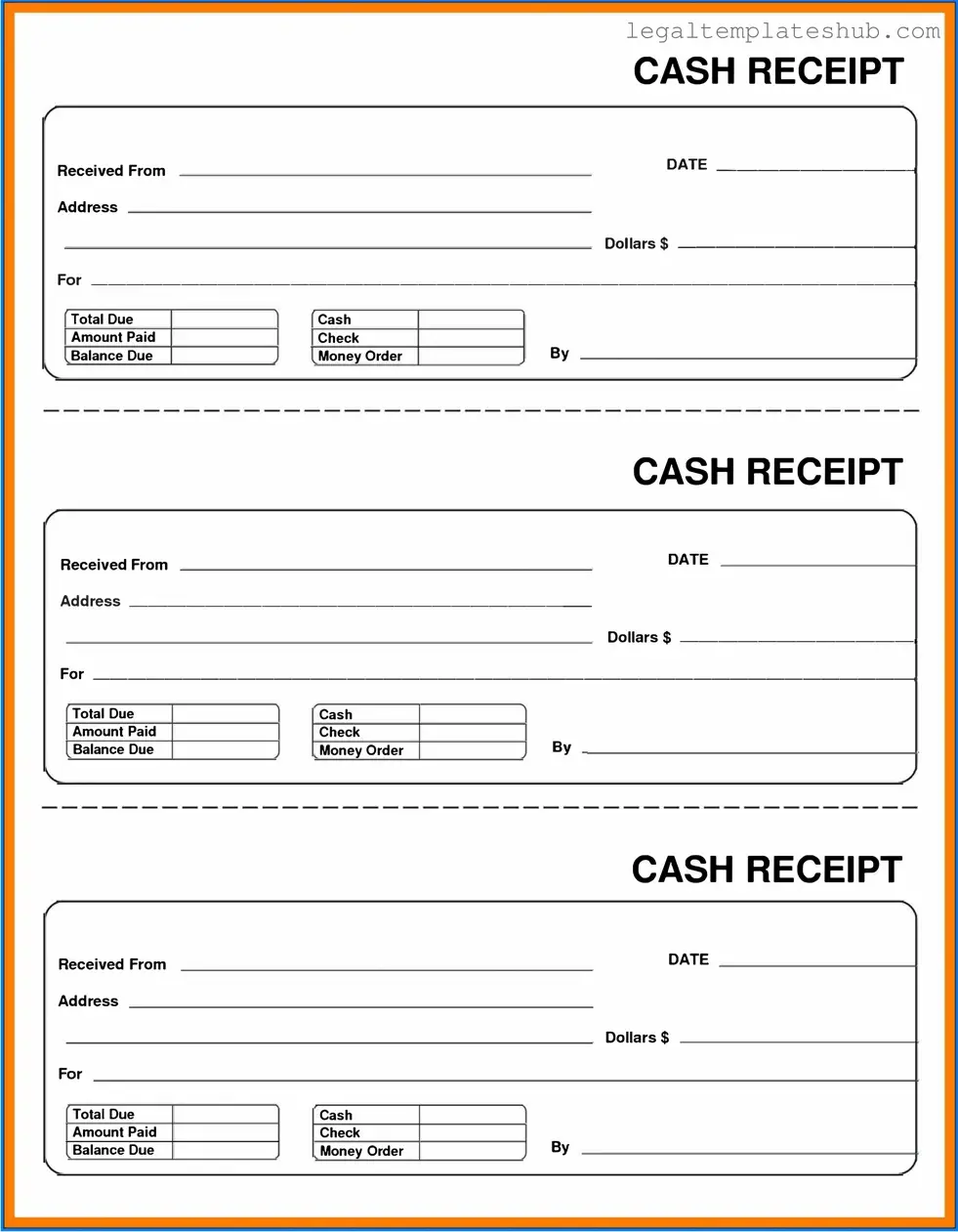Blank Cash Receipt PDF Form
A Cash Receipt form is a document used to acknowledge the receipt of cash payments, providing a clear record for both the payer and the payee. This form serves as proof of transaction, ensuring transparency and accountability in financial dealings. To streamline your financial processes, consider filling out the form by clicking the button below.
Access Editor
